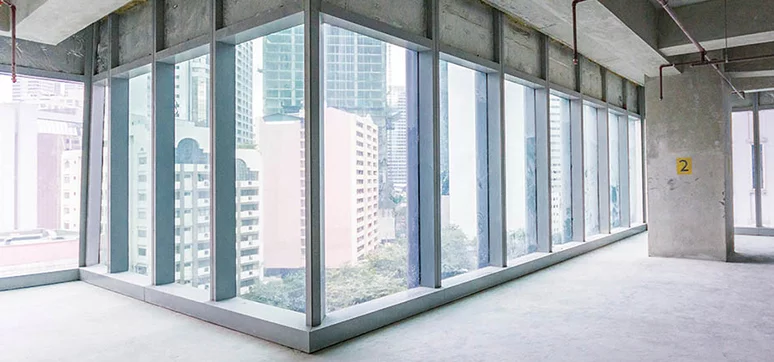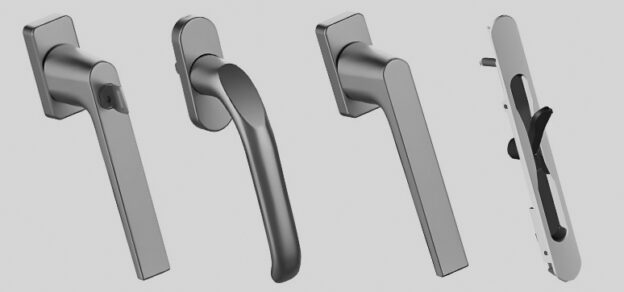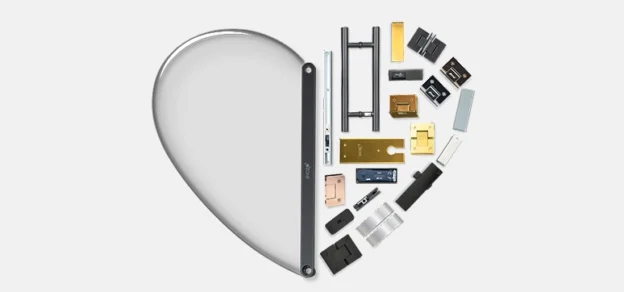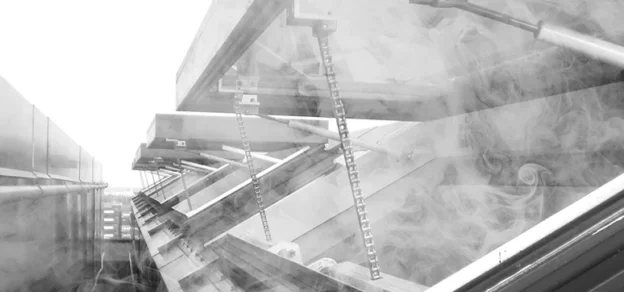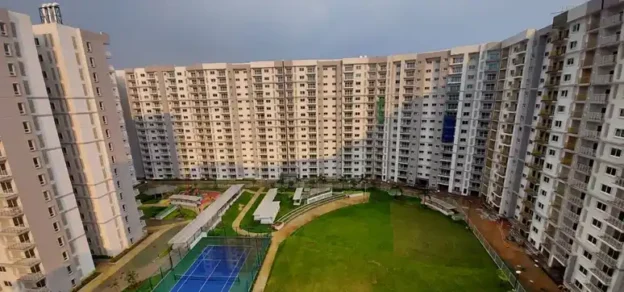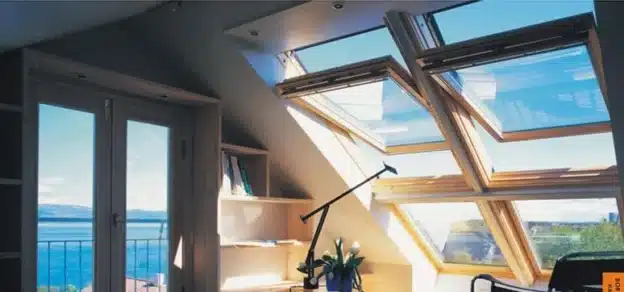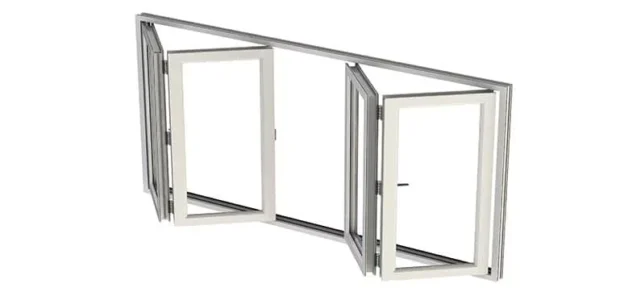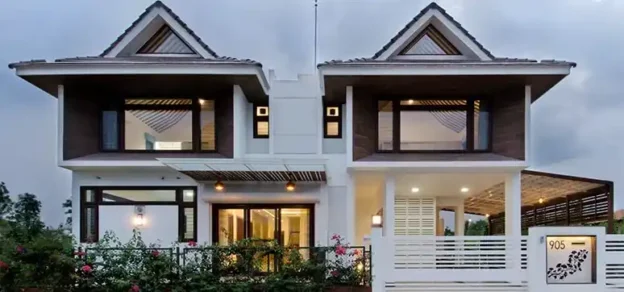Every architectural design comprises various elements that combine and integrate to give the desired look and feel to a place. While each and every element has a distinguished and well-defined role to play, one can certainly not ignore the profuse relevance of doors and windows while designing the façade of a building.
With the advancement in the industry in terms of hardware and technology, there have been significant changes that have transformed various aspects of architectural hardware doors and windows. Let us take a look at various innovative designs, materials and technologies pertaining to architectural hardware for doors and windows:
Criteria For Selection Of Architectural Hardware
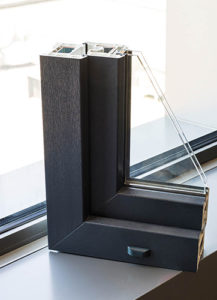
Today, with changing trends in architecture, hardware has become design oriented, which means architects prefer to choose hardware which does not compromise the designs rather complements it apart from being highly functional.
Mostly, the hardware selected guides the type of elevation that the building will form, hence, selecting the hardware becomes an extremely imperative decision.
Certain benchmarks for selection need to be considered while picking the architectural hardware. Any hardware (architectural) should provide the highest level of performance, security, safety, durability and feasibility to the building.
Besides, ease of use without compromising the aesthetics of the buildings is another important aspect of selection. For any architect, visual appeal of the building is something that cannot be compromised with. Hence, selection criteria of the hardware for fenestration are profoundly based on its visual aspects like colour, texture, finish, overall built quality and aesthetics of the hardware. The hardware can be concealed or visible, but should not disturb the overall design of the building.
High quality, durable and visually appealing hardware systems tends to complement the design of the building fabulously giving it the eccentric look.
The Technology In Use

The expanding fenestration market is motivating the manufactures to innovate materials and bring out various technological advancements. Today, the use of uPVC, wPVC and aluminium to build doors and windows has become very common in metropolitan cities in India. Manufactures are now innovating in the finishes, textures, profiles, slider/swing systems to cater to the needs of the ever evolving market. As a part of the invention, various manufacturers have created inbuilt fly mesh, with their doors and windows which are soundproof, heat resistant and water seal tight. Kinetic façade is yet another interesting concept which is coming up in the world of architecture. What makes kinetic façade a preferred option is the fact that it changes dynamically rather than being static or fixed, allowing movement to occur on a building surface.
This movement can be programmed according to the energy consumption of the building or just to create interesting patterns in the façade. Various buildings around the world have been using this concept to save on a lot of energy. \
The panels open up and close in response to the sun’s movement, which protects the buildings from heat and glare. Kinetic façade is the future of building façade system, which will no longer be dependent on materiality or ornamentation. There has been advancement in the architecture hardware system of point fixed (spider/ clamped system), structurally glazed (cast in channels/coating system) and modular post railing systems. Mostly, the unwanted elements which were not required structurally are removed to provide more modish designs which just highlight the glass rather than the entire system it is attached to. The trend is majorly observed as a part of commercial buildings.
Quality Testing Methods
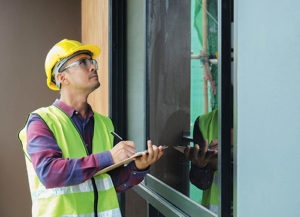
To produce a superior quality of hardware, the manufacturers are required to adhere to certain standards mentioned in different IS codes. However, performance requirements need to be established for each element of the building. The testing methods for the architectural hardware should check any form of water penetration in the building through the door/windows and structural failure due to excessive load of these elements. The test must also ensure thermal comfort. Excessive air leakage may result in discomfort. The buildings are exposed to harsh conditions and climatic changes which often lead to potential deterioration and failures.
This may be due to expansion and contraction of materials and physical damages due to climate change. Therefore, it is important that the design and construction as well as material are properly tested following the strict standards. In India, there are certain tests that are done to ensure the supreme quality of the architectural hardware.
Some of them include air infiltration test, water penetration test, structural load test and seismic test. Besides, dynamic water penetration tests and thermal cyclic tests are also a part of tests conducted in the country. The window and doors are tested in the laboratory before installing on the sites. There are mock tests which simulate the exact condition that the façade would face.
How To Choose The Hardware: Key Safety Parameters To Consider

Fire safety is an important and indispensable factor to be considered. Which means a supreme quality should have high resistance to fire. Generally, all materials have a fire rating and it is a good idea to look for the fire rating of the material used to create the fenestration. This parameter is extremely important for high rise commercial and residential buildings which are occupied by a large number of occupants.
Glass has been yet another widely used element. The way of using the glass also enhances the safety factor of the building. One should opt for thick glass as it guarantees safety. Thickness also adds up the weight on the building. Toughened or security glass could prevent the shattering of the glass and improve the overall quality of the fenestration and the safety of the building.

While selecting the architectural hardware, one certainly cannot ignore the sliding and locking system. The sliding and locking system should be designed according to the weight of the window and door. The slider should be tested according to the industrial standards and there should not be any hindrance in the channel used.
Focusing on the locking system, it should be located at the right place with appropriate loading, to make it less fragile Besides all of the above parameters, the profile of the window/door should be tested against extreme conditions and should be designed according to the desired weight of the entire fenestration and the building structure. The profiles should not add extra load than desired on the structure of the building.
The Standardisation Of The Architectural Hardware: Guide To Genuine Products

Different standards have been set for ensuring the quality of doors and windows. One of them is IS 4021 which contains details about timber door, window and ventilator frames. Another one ISO/TC 162 captures the details about doors, windows and curtain wall for the buildings.
Talking about the other certifications, BS EN 7412:2007 contains specifications for windows and doors made from uPVC profiles. Each type of door and window has different country standards and international standards that the manufacturers are bound to follow.
Codes are made according to the difference in materiality in doors and windows. For example, IS4021 contains details about timber doors and windows and BS EN 7412:2007 contains details about uPVC doors and windows. Hence it is always advised that people should check these standardization codes before installing the architectural hardware, to ensure the high quality of the products.
Conclusion:
In all buildings, architectural hardware plays a massive role. While investing in these products, one must consider various factors and pick the one that fits in their requirements. Also, analysing various elements like quality, material, safety, visual appeal, the design of the building, etc., often helps one to invest smartly in these products.
